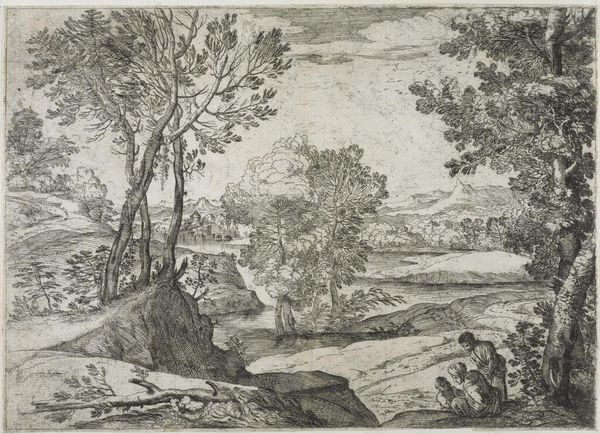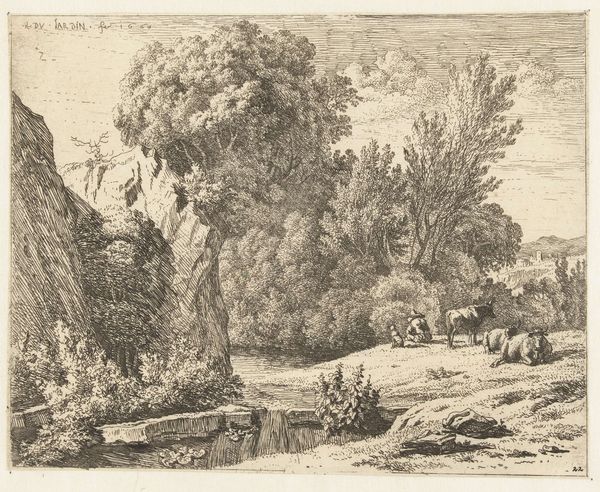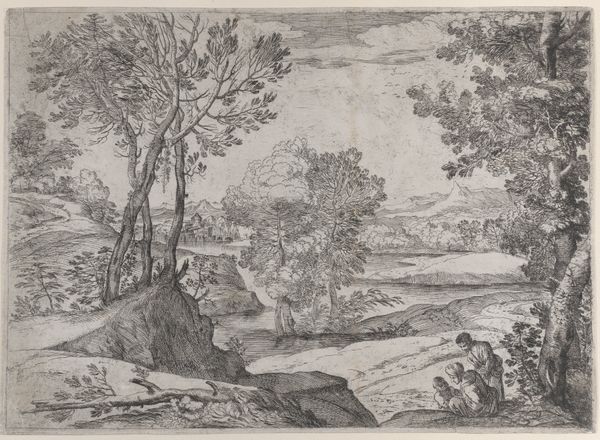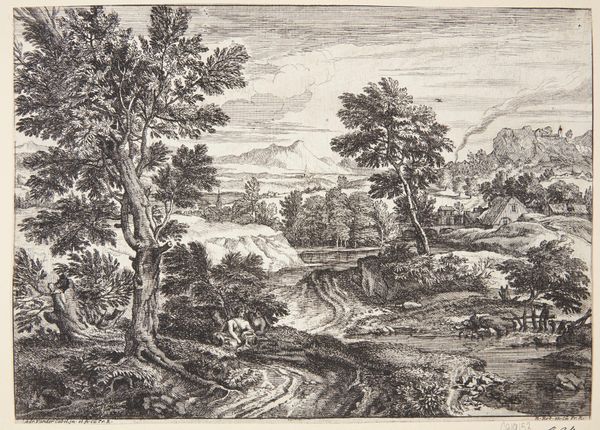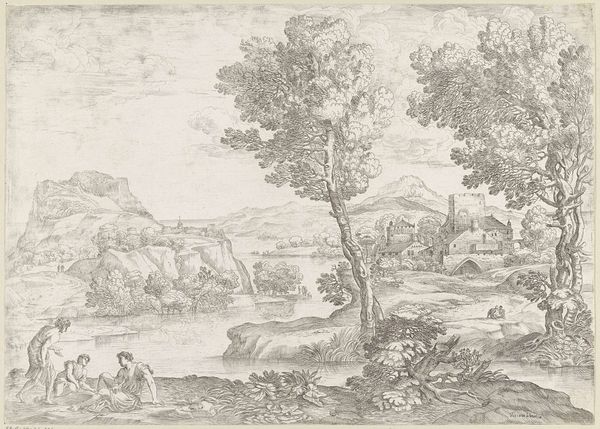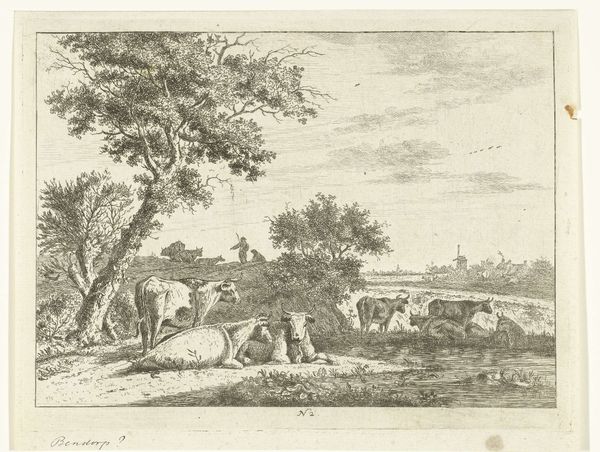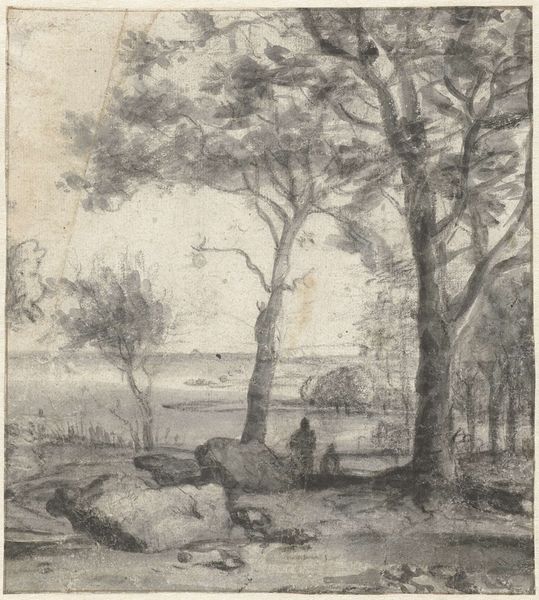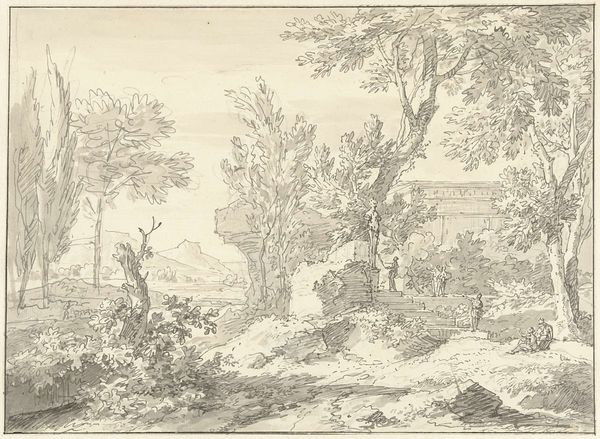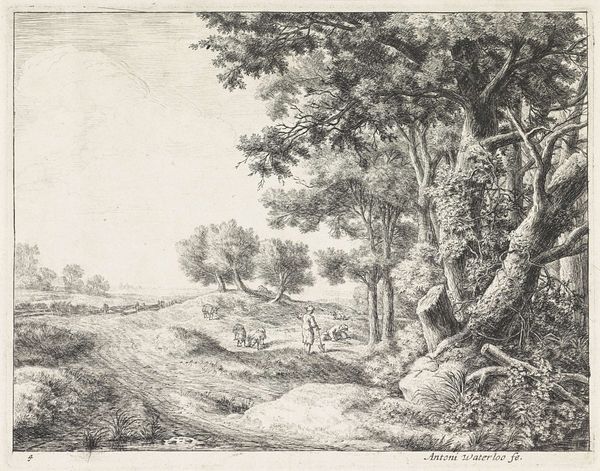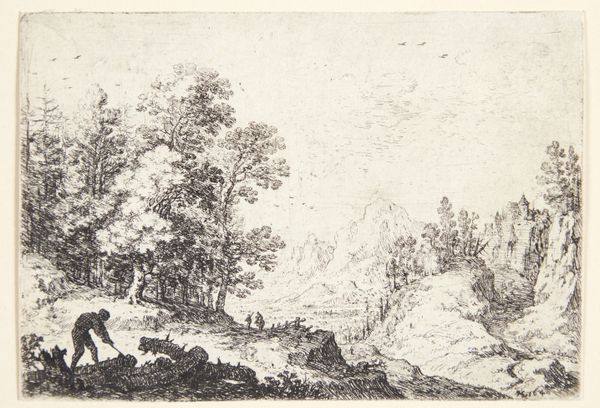
drawing, print, paper, pencil
#
drawing
# print
#
pencil sketch
#
landscape
#
classical-realism
#
paper
#
pencil
Dimensions: 210 × 280 mm
Copyright: Public Domain
Curator: Ah, the serene pencil drawing, "River Scene," by Claude Lorrain, here at the Art Institute of Chicago. Though undated, it offers a window into Lorrain's classical-realist approach to landscape. Editor: There's a wistful quality about it. A still scene, yes, but almost too still, with muted tones that suggest reflection and perhaps a touch of melancholy. The uprooted branch seems symbolic of a loss, or impermanence. Curator: Lorrain was certainly immersed in the art world of 17th-century Rome. His work became so popular during his lifetime that imitators abounded, shaping ideas of the picturesque landscape for generations. This drawing exemplifies his study of light and atmosphere. The building in the distance... Editor: Looks like a Roman villa or possibly even a temple, suggesting ideals of beauty. Notice how it’s just slightly off-center. This gives balance but also hints at an existing disharmony, or maybe I am reading too much into it! Curator: Not at all, that's precisely it! Lorrain was a master of composition, manipulating perspective to create both a sense of depth and a narrative that resonates with cultural and historical ideals. There's this tension between the idyllic landscape and these looming architectural markers of a classical past. Editor: The trees act almost as guardians to the scene; their leaves conceal what secrets could be hidden. Do you feel they reflect something? They seem to hide as much as reveal. Is this a representation or re-imagining of a time in Lorrain's world? Curator: That’s a great question. Landscape in this period carried profound political weight, offering visions of empire and natural order that legitimized existing power structures. The choice of Roman subject matter positions the drawing in a clear conversation with traditions of power. The pencil drawings he made could well be related to particular commissions, possibly by Roman patrons. Editor: So beyond aesthetic charm, it suggests established power relations; Lorrain uses it as a vessel of his patron's authority? Even in a subtle piece such as this, one sees his patrons! Curator: Precisely. It showcases the potent public role landscape played at the time. Editor: Looking at it through that lens gives it such depth. Curator: Indeed, a deeper engagement of his intent in depicting classical architectural landmarks that served as social anchors to his world, it’s a landscape imbued with sociopolitical weight. Editor: It seems the river flows not only with water but with time, culture, memory... it is more thought provoking now, reflecting all it symbolizes.
Comments
No comments
Be the first to comment and join the conversation on the ultimate creative platform.
